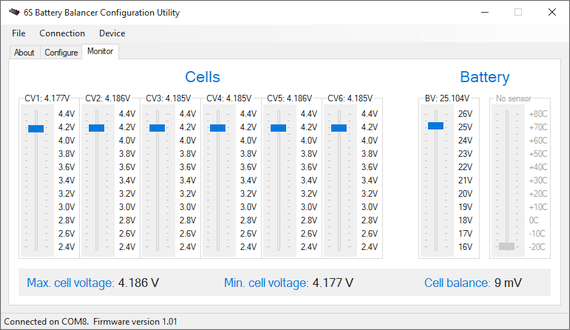Battery Balancers

Assessing cell balance
Unlike lead-acid batteries which require little maintenance and are very forgiving of neglect, Lithium-based batteries require care and vigilence if reliability and long-life are to be realised. In a worst-case scenario, a poorly maintained Lithium battery can spontaneously catch fire if given sufficient provocation.
As a Lithium battery is charged and discharged repeatedly over time, its cells will begin to diverge in their state of charge. This occurs even though the charging and discharging currents for all cells are identical.
If a battery is repeatedly charged and discharged without any regard for cell balance, some cells may be overcharged and some may be undercharged. Overcharging damages cells and reduces the battery's lifetime, and undercharging means that the battery is not storing as much energy as it is capable of. More catastrophically, overcharging damaged cells is a risk factor for spontaneous ignition.
In summary, cell balancing:
- Maximises the energy stored,
- Increases battery life, and
- Reduces the risk of fire.
Millswood Engineering makes two UAV battery balancers:

A precision instrument that can be used as a hand-held battery verification tool, or installed inside a UAV to balance a battery's cells as well as report the cell voltages and battery temperature via the vehicle's CAN bus.

A precision device that is designed to be installed inside a UAV to balance a battery's cells, as well as report the cell voltages and battery temperature via the vehicle's CAN bus.